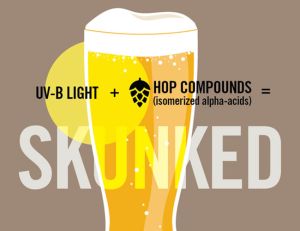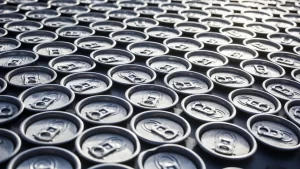Protecting your Beer From Becoming Skunked
Beer is a popular alcoholic beverage that is enjoyed by millions of people around the world. But did you know that light and UV rays can have a negative impact on beer? In this blog, we’ll explore why light and UV rays are bad for beer and how you can protect your beer from their harmful effects.
What Causes Skunked Beer
Light and UV rays can cause a chemical reaction in beer, resulting in a phenomenon known as “skunked” beer. This happens when the hops in the beer break down and release a chemical compound called 3-methyl-2-butene-1-thiol, which gives the beer a distinct skunky aroma and flavor. Skunk spray has the same compound, hence the name “skunked” beer. This can even happen in low levels of light, such as the light from a refrigerator or a store shelf. This is why many breweries use brown or green bottles for their brews– the darker color helps to protect the beer from becoming skunked.

Protecting Beer in Darker Bottles
However, even with darker bottles, beer can still be affected by light and UV rays. This is why it’s important to store your beer in a cool, dark place away from direct sunlight. This can be a cellar, a pantry, or a dedicated beer fridge. Storing it in a dark place will help to protect it from light and UV rays and prevent it from becoming skunked.
Cans Over Bottles
Choosing beer that is packaged in cans is another way to protect your beer. Cans are completely opaque and block out all light, so the beer is protected. Additionally, cans are more airtight than bottles, which can help to preserve the beer’s flavor and freshness. Check out our blog on the Pros and Cons of Canned and Bottled Beer for more info.

Light and UV rays can have a negative impact on beer by causing it to become skunked. There are steps you can take to help protect your beer, like choosing a beer that is packages in cans. Or, if you do have bottled beer, store it in a cool, dark place away from direct sunlight. This will help to preserve the flavor and quality of your beer and ensure that it tastes its best when you’re ready to drink it.